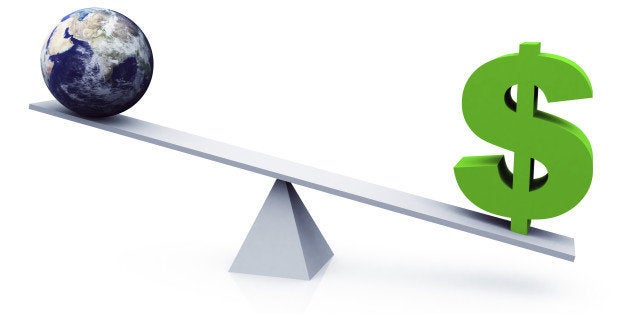
We're on the eve of a new dawn in environmental reporting by companies and investors. Some may think that's a bold prediction. Just a few months ago, a report from Ernst & Young and the Investor Responsibility Research Center Institute concluded that only slightly more than half of large, publicly-traded American companies even list climate change as a risk. And, for those that do, "disclosures often are generic and do not provide clear, concise and insightful information."
So why is it about to change? First, there now is data reported and analyzed. Second, mainstream investment houses like Goldman Sachs are building billions of dollars in investment products that rely on that data; they are not about to let disclosure backslide. Third, heavyweights of the financial establishment -- including Bloomberg LP founder Michael Bloomberg, former SEC Chair Mary Schapiro and Bank of England Governor Mark Carney -- are committed to making it happen.
It's been a 500-year journey to get to this tipping point. To understand it, start with one of the most remarkable, if forgotten, figures in history: Brother Luca Pacioli, a 15th century Italian Friar.
Brother Luca taught perspective to Leonardo da Vinci. His book, "Everything About Arithmetic, Geometry and Proportion", was printed on the Guttenberg press. And he basically invented accounting. His system allowed the merchants selling fish and fruit in Renaissance Florence to understand if they made or lost money. But while they may have been dependent on the sea and the fields of Tuscany, the health of the natural systems was taken as a given. As a result, Brother Luca taught people how to paint the environment, but not how to account for it.
Flash forward to the Great Depression, when the United States' corporate disclosure regimen was created. In the Depression, Washington started to regulate corporate disclosure based on the technicality that that shares are traded across state lines. Therefore, the legal underpinning in the US is trading in shares. So it is understandable, if regrettable, that our national disclosure regime was founded on short-term financial indicators.
As a result, only relatively recently have we built up environmental reporting. For instance, the Global Reporting Initiative, the first major international institution to provide a widely accepted environmental reporting framework, only will celebrate its 20th anniversary next year. CDP, formerly the Carbon Disclosure Project was founded in 2000. The Sustainability Accounting Standards Board (SASB), which has just finished promulgating multi-stakeholder sourced sustainability performance indicators by industry sector, is not even five years old. .
While the data is not comprehensive or comparable, and often is not validated, at least some data exists. That's allows analysis. Specialist advisory firms like Sustainalytics advise institutional investors on the environmental profiles and risks of the companies in which they invest. More recently, mainstream investment houses like Goldman Sachs and MSCI have used the data to create products like low-carbon index funds. There are already billions of dollars invested.
The next major step in that evolution is likely to take place at the end of this year. Bank of England Governor Mark Carney chairs the Financial Stability Board (FSB), which monitors and makes recommendations about the global financial system. Last December, at the Paris climate change meeting, COP-21, he announced the FSB-sponsored "Task Force on Climate-Related Financial Disclosures". And then he seeded it with global financial star power. The Chair is Bloomberg LP founder Michael Bloomberg. The Vice Chair is former SEC Chair Mary Schapiro.
Bloomberg and Schapiro have put their reputations on the line. They have been lobbying national stock exchanges. They have appeared before both the Investor Summit on Climate Risk and the 10th anniversary celebration of the Principles on Responsible Investment. Each time they have conveyed the same message: They expect to issue a report around the end of the year, and expect a number of national bodies to adopt those recommendations in 2017. Meanwhile, here in the United States, the SEC has a major corporate disclosure review project underway.
It's taken half a millennium to get to this point. And the stars are aligned for meaningful environmental disclosure. But stars can fall out of the sky. So the next half a year may be more crucial than all 500 years before, at least in terms of finally getting adequate, validated, comparable corporate environmental disclosure. (Portions of this column first appeared in the Sallan Foundation's Snapshot.)